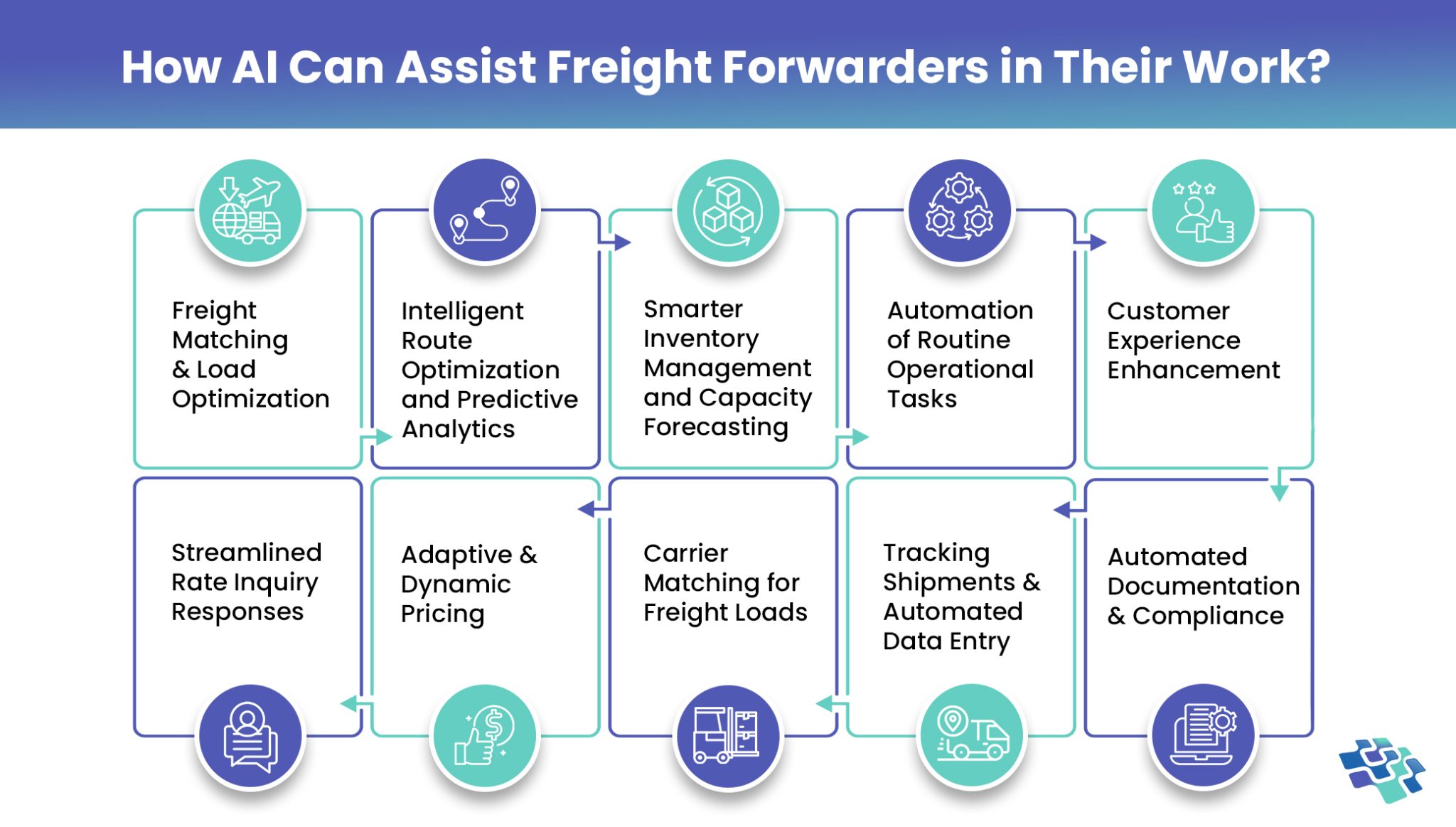How AI Can Assist Freight Forwarders in Their Work?
There are countless and fascinating applications of AI in freight forwarding. Artificial intelligence, which Gartner defines as technology that “applies advanced analysis and logic-based techniques, including machine learning, to interpret events, support and automate decisions, and take actions,” can be used in a variety of ways to enhance the customer experience for freight shipping and assist freight forwarders in reaching new levels of efficiency, speed, and service.
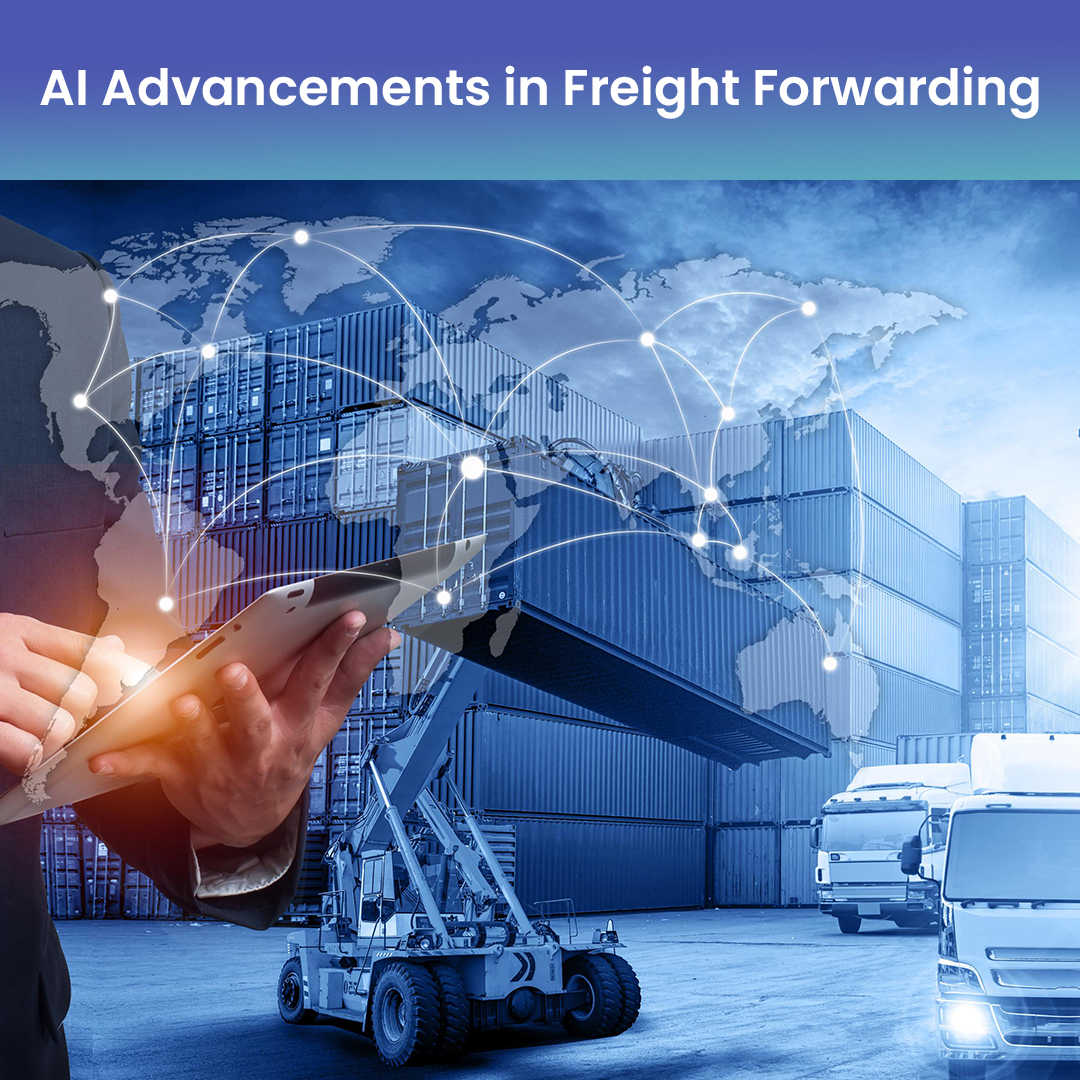
High Operational Costs? Reduce Expenses with AI-driven Efficiency and Process Automation

“As the logistics industry has consistently been trying to simplify and speed up its processes, it is predictable that artificial intelligence would play a part in this objective. AI software is used for forecasting, inventory taking, route planning, and operating automated assets, including robots and forklifts.”– Statista
Overview of Digital Freight Management
A fascinating change in logistics is being facilitated by freight forwarding software due to the impressive developments in artificial intelligence. AI-driven technical innovation has had a profound impact on the global shipping sector, providing freight forwarders with several advantages.
Freight forwarders can enhance their services with chatbots, predictive analytics, smart warehousing solutions, and logistics data analytics by integrating AI smoothly into their systems. Did you realize that the potential for autonomous vehicles is rapidly approaching? Logistics is becoming more competitive and efficient than ever because of AI-driven advancements that are changing the freight forwarding industry. To streamline the freight management process, digital freight management entails adopting cloud-based technology and embracing digital transformation. Here is a quick overview of a few logistics procedures that use digital technology to their benefit:
- Select a reliable carrier for outsourcing.
- Determine the optimal route and mode of transport.
- Prepare and manage all required transit documents.
- Ensure transparent shipment tracking.
- Analyze supply chain data to enhance shipping processes.
Operational efficiency is made possible by freight forwarding software.
The Role of AI in Freight Management
To transport the products from the supplier to the final customer, freight forwarding involves overseeing supply chain procedures. Due to the global nature of the business, the entire procedure is fraught with difficulties. There are numerous challenges to overcome, ranging from document preparation to reducing delays and streamlining routes.
Data is the foundation of artificial intelligence, which uses automation and insightful analysis to assist solve typical freight forwarding issues. Here’s how AI in supply chain management is becoming an essential tool for the freight industry:
- Predictive Analytics: Imagine the vast volumes of data that artificial intelligence systems can analyze to identify patterns and trends. This capability aids firms in making informed decisions regarding delivery scheduling, inventory control, and demand forecasts.
- Dynamic Route Optimization: AI technologies help in shipping route optimization by using real-time data on weather, traffic, and fuel efficiency. Delivery times are expedited, and operational costs are reduced.
- Automating Repeated Tasks: Routine processes like tracking, invoicing, and document processing can be automated by artificial intelligence software development services. There is less chance of human error and less time.
Leveraging AI/ML Solutions for Supply Chain Optimization
Advancements in Freight Forwarding Software
ChatGPT is one of the tools that can come to mind when you think of artificial intelligence. However, AI is more than just strange stolen art and fast content creation. Here are some instances of how AI for freight forwarder can help:
- Smart Warehouse Management System: Using a variety of computerized tools, freight forwarders handle incoming orders. Managing inventory, stocking, and storage are some of the top priorities. Space and process management, shipment coordination, and volume monitoring can make the difference between a steady source of revenue and a shipwreck. AI is more than just data collecting and analysis, even though logistics data analytics is a crucial component.
- Automation of Routine Operations: For shipping and freight forwarding businesses, the advent of logistics automation created intriguing opportunities. Workers can focus on more critical activities by using automated freight technologies to manage repetitive operations and optimize processes. Routine chores like contacting stakeholders, entering requests into your system, and producing paperwork like automatic reports and invoices can all be handled by freight tracking software. Chatbots and freight forwarding software connections allow humans to concentrate on more strategic duties.
- Real-time GPS Tracking for Global Shipments: Real-time data on the whereabouts and state of the goods are provided by freight tracking software. GPS tracking devices let you know when shipments are delayed, or something goes wrong so you can react right away. Real-time shipment tracking can help you save a lot of time and money. Timeliness is crucial in the freight forwarding sector, and logistic software helps you stay ahead of the curve.
Enhance Shipment Visibility using Real-Time Tracking and Predictive Analytics
Key AI Use Cases in Freight Forwarding
Explore the top ten key AI use cases in freight forwarding that enhance efficiency, automate processes, optimize route planning, and improve decision-making, enabling seamless logistics operations and a competitive edge in the industry.
1. Freight Matching & Load Optimization
By matching empty trucks or ships with available cargo, AI systems can maximize load capacities and minimize the frequency of empty runs. This optimizes the use of resources while simultaneously saving fuel.
- Smart Load Matching: AI can instantly match products with the optimal carrier based on factors like size, weight, location, and urgency. By ensuring that trucks and ships are utilized to their fullest capacity, this reduces waste and pollution.
- Cost Reduction: AI-driven freight matching can significantly lower transportation costs for businesses by increasing load efficiency, which would be advantageous to shippers and carriers.
2. Intelligent Route Optimization & Predictive Analytics
Real-time data, such as traffic patterns, weather predictions, and geopolitical developments, can be analyzed by AI-powered algorithms to optimize shipping routes. This ensures that the most economical and efficient routes are used to deliver the goods, cutting down on fuel consumption and transit times.
By examining past data and present circumstances, machine learning models can forecast delays. This makes it possible for freight forwarders to give more precise ETAs, which enhances client satisfaction and facilitates better planning.
3. Smarter Inventory Management and Capacity Forecasting
AI can estimate demand for items by analyzing past sales data, industry patterns, and seasonal factors. This lowers the possibility of overstocking or stockouts by assisting freight forwarders and shippers in more precisely planning inventory levels.
AI in inventory management in supply chain management can help optimize the distribution of transportation capacity by forecasting changes in demand, ensuring that freight forwarders can satisfy demand without incurring needless expenses.
4. Automation of Routine Operational Tasks
Automating repetitive operations is one of AI’s most obvious advantages for freight forwarding. Large data sets can be processed by AI algorithms, which is especially helpful for roles or tasks like document processing. By automating the processing of bills of lading, invoices, and other crucial papers, AI can cut down on human error and save a significant amount of time.
It can also be helpful in customer support, where chatbots and AI-powered technologies can answer common questions, freeing employees to work on more difficult assignments.
5. Customer Experience Enhancement
AI-powered improvements like Real-Time Tracking and Personalized Solutions improve the consumer experience. Customers can always stay on top of their shipments with AI-powered solutions that give them real-time shipment updates.
Personalized solutions catered to each customer’s preferences are made possible by customized logistics solutions based on the customer’s prior decisions and requirements.
6. Streamlined Rate Inquiry Responses
Customer satisfaction and operational efficiency can both be impacted by answering rate inquiries effectively. By examining cargo information, market conditions, and historical data, AI-powered chatbots and virtual assistants can rapidly deliver precise rate quotes. As a result, there is less need for physical intervention and quicker reaction times.
Include a chatbot driven by AI on your website and in your correspondence. Use historical rate data and frequently asked consumer questions to train the chatbot. To increase accuracy and relevancy, update and modify the chatbot frequently based on conversations.
7. Adaptive & Dynamic Pricing
With the aid of AI, dynamic pricing models that modify rates in response to current variables like capacity, demand, and competitive pricing can be created. By doing this, pricing strategies are ensured to be optimal for both competitiveness and revenue.
Use AI techniques to examine demand, capacity, and rival price data in real-time. Using this information, the AI should dynamically modify prices to make sure they are reasonable and in line with the state of the market. Review pricing performance regularly and make any adjustments to the AI model.
8. Carrier Matching for Freight Loads
A perfect match can now be found in seconds because of advanced algorithms, making manual matching all but obsolete. They only need the essential carrier and load data (size, kind, and transportation requirements) as well as vehicle capabilities, availability for specific loading and unloading times, and, of course, their price range.
Load-to-carrier matching is faster, more accurate, and offers more options than traditional matchmaker services. You could compare it to using a dating app. To further expedite the process, such technology can either entirely automate decision-making or provide recommendations that freight forwarders might use to inform their choices.
9. Tracking Shipments & Automated Data Entry
The likelihood of losing a delivered item has significantly increased due to supply chains becoming more complex, which entails a growing number of carriers transferring goods into one another’s hands and combining them. However, such a problem can be resolved with comprehensive tracking software. It necessitates collaboration between the carrier’s databases and transportation management systems, sharing the supplied data that shows the shipment’s location and current status. Maintaining cargo tracking is now simpler than ever because of complex scanning devices that combine computer vision and natural language processing.
Because AI algorithms automate data entry procedures, improve documentation correctness, and expedite customs clearance, they drastically reduce human error.
10. Automated Documentation & Compliance
With AI, freight forwarders can process massive amounts of data in a matter of minutes! Information from contracts, emails, invoices, and other crucial documents, such as an air waybill or bill of lading, can be extracted and arranged using this tool. By reducing the need for manual data entry, freight forwarding businesses may save time and prevent human mistakes.
AI can automatically determine whether the documents comply with international or local trade laws, including customs limits and duties, to ensure that shipments are completed without a hitch. AI can also be used to automatically check for embargoed locations, export restrictions, and sanctioned firms to avoid delays or penalties for non-compliance
Optimize Route Planning with AI-driven Software Development Services for Faster, Cost-Effective Freight Deliveries
Challenges & Considerations
Although there are many benefits to AI-driven route optimization, there are drawbacks as well:
- Data Quality: The accuracy and quality of data determine how well AI systems work. To ensure dependable inputs for AI algorithms, logistics organizations need to make investments in strong data collecting and management systems. Data-driven insights are crucial to supply chain AI’s ability to streamline processes, cut expenses, and raise customer happiness.
- Cancer Detection: To identify anomalies in chest X-rays, detect early-stage tumors in mammograms, and even predict cancer subtypes by analyzing pathology slides, artificial intelligence algorithms are being deployed. These developments are essential for increasing cancer patients’ chances of survival and the effectiveness of their treatments
- Implementation Costs: It can be expensive to implement AI-driven solutions, particularly for small and medium-sized businesses. But frequently, the long-term advantages outweigh the initial outlay.
- Workforce Adaptation: A competent workforce that can oversee and utilize these software is necessary for the deployment of AI-driven technology. To ensure successful implementation, staff must get training and upskilling.
The Future of Freight Forwarding with AI
AI capabilities are expected to increase exponentially over the next five to ten years, potentially revolutionizing the freight forwarding sector. Possible developments consist of:
- Enhanced Custom Clearance Processes: AI can help to traverse the intricate web of international trade regulations, utilizing natural language processing more effectively to dynamically analyze and respond to legislative changes.
- Smart Warehousing: It is anticipated that IoT devices and robots with AI capabilities would improve inventory management in supply chain management by automating replenishing and forecasting stock levels.
- Implementation Costs: It can be expensive to implement AI-driven solutions, particularly for small and medium-sized businesses. But frequently, the long-term advantages outweigh the initial outlay.
- Fully Autonomous Vehicles: With the introduction of AI-powered trucks, ships, and aircraft, fully autonomous freight services may become possible, significantly lowering the need for human intervention in transportation while increasing safety.
Wrapping Up
AI is revolutionizing freight forwarding by enhancing efficiency, reducing costs, and improving decision-making. From predictive analytics for demand forecasting to automated documentation and real-time shipment tracking, AI-driven software empowers freight forwarders to optimize their operations and stay competitive. As the logistics industry continues to evolve, adopting AI is no longer optional—it’s essential for long-term success. At NextGen Invent, our artificial intelligence software development services are designed to help freight forwarders harness the power of AI for seamless logistics operations. Whether it’s automating workflows, enhancing visibility, or optimizing route planning, we provide customized AI software specific to your business needs. Partner with us to drive innovation, improve efficiency, and gain a competitive edge in the ever-evolving logistics industry. Contact us to explore how AI can transform your freight forwarding operations!
Frequently Asked Questions About
Related Blogs
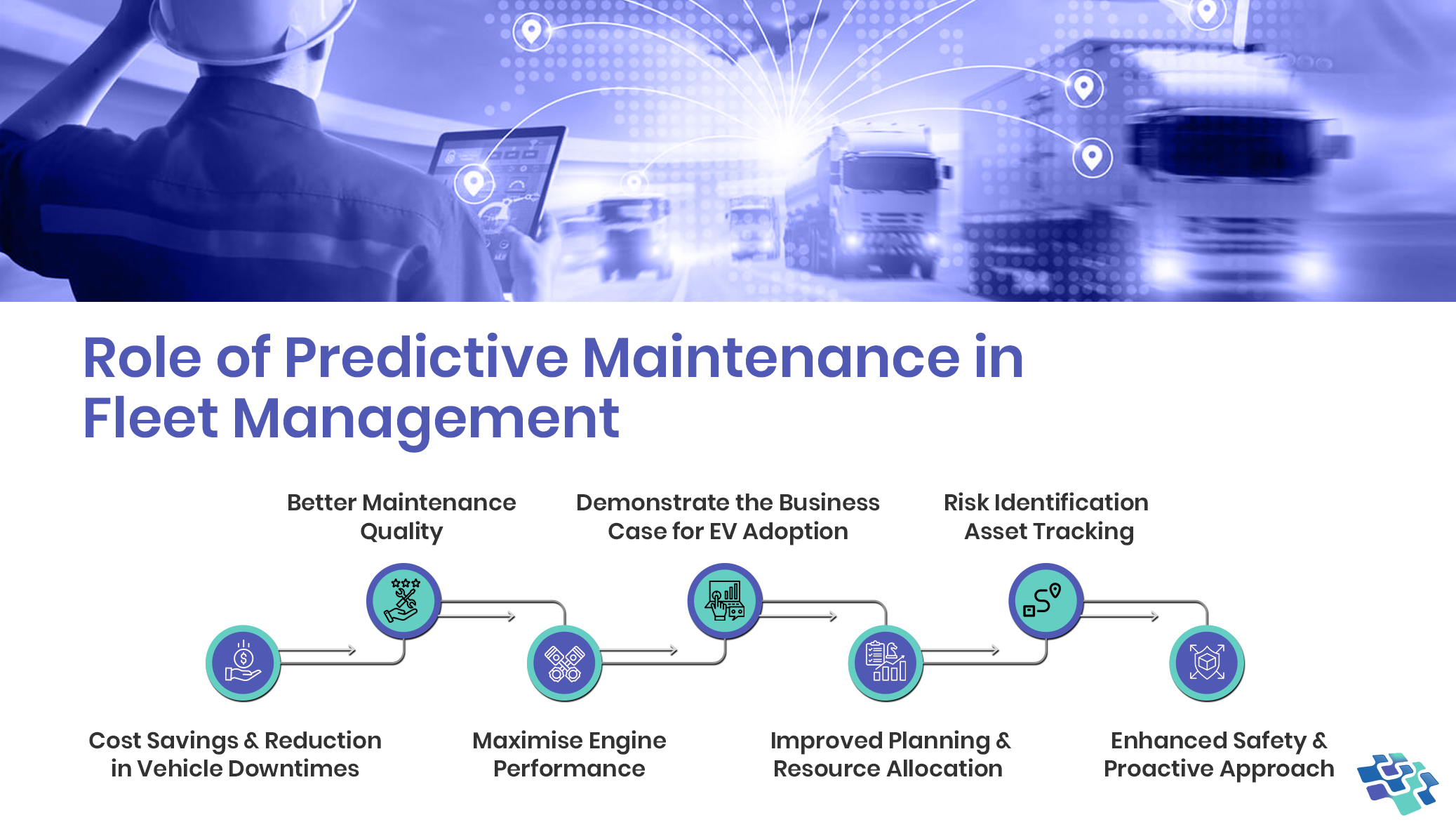
How Fleets Can Maximize Uptime and Efficiency with Predictive Maintenance?
Maintaining cost-effectiveness and operational efficiency is crucial in the cutthroat field of fleet management. Predictive maintenance has become a game-changing strategy among the numerous others that are accessible. Predictive maintenance has been shown to, boost vehicle availability by 20% , lower maintenance costs by up to 25%, and prolong the lifespan of machinery by several years. These convincing figures highlight the real advantages of implementing predictive maintenance with Generative AI development services in New York for fleet management, which empowers fleet managers to ensure dependability and efficiency.
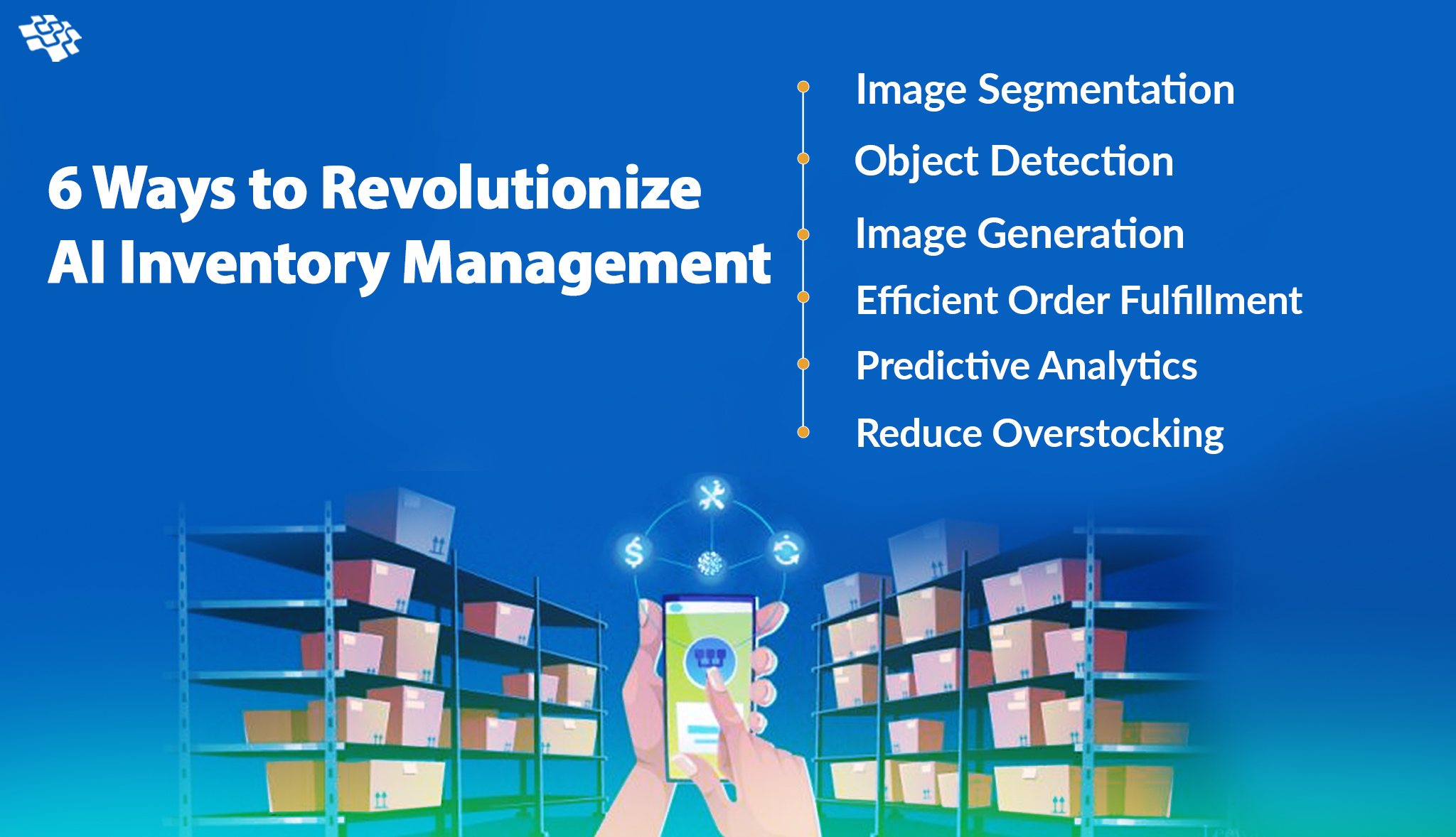
How AI in Inventory Management is Redefining Inventory Control?
Modern businesses rely heavily on inventory, which is also may be their most important asset. It can have an impact on consumer satisfaction, turnaround time, sales, production, and even profitability. Therefore, a key component of supply chain management and one of the main objectives of enterprises is the efficient use of AI in inventory management. The supply chain can come apart if it is not properly controlled because it is where all its components converge.
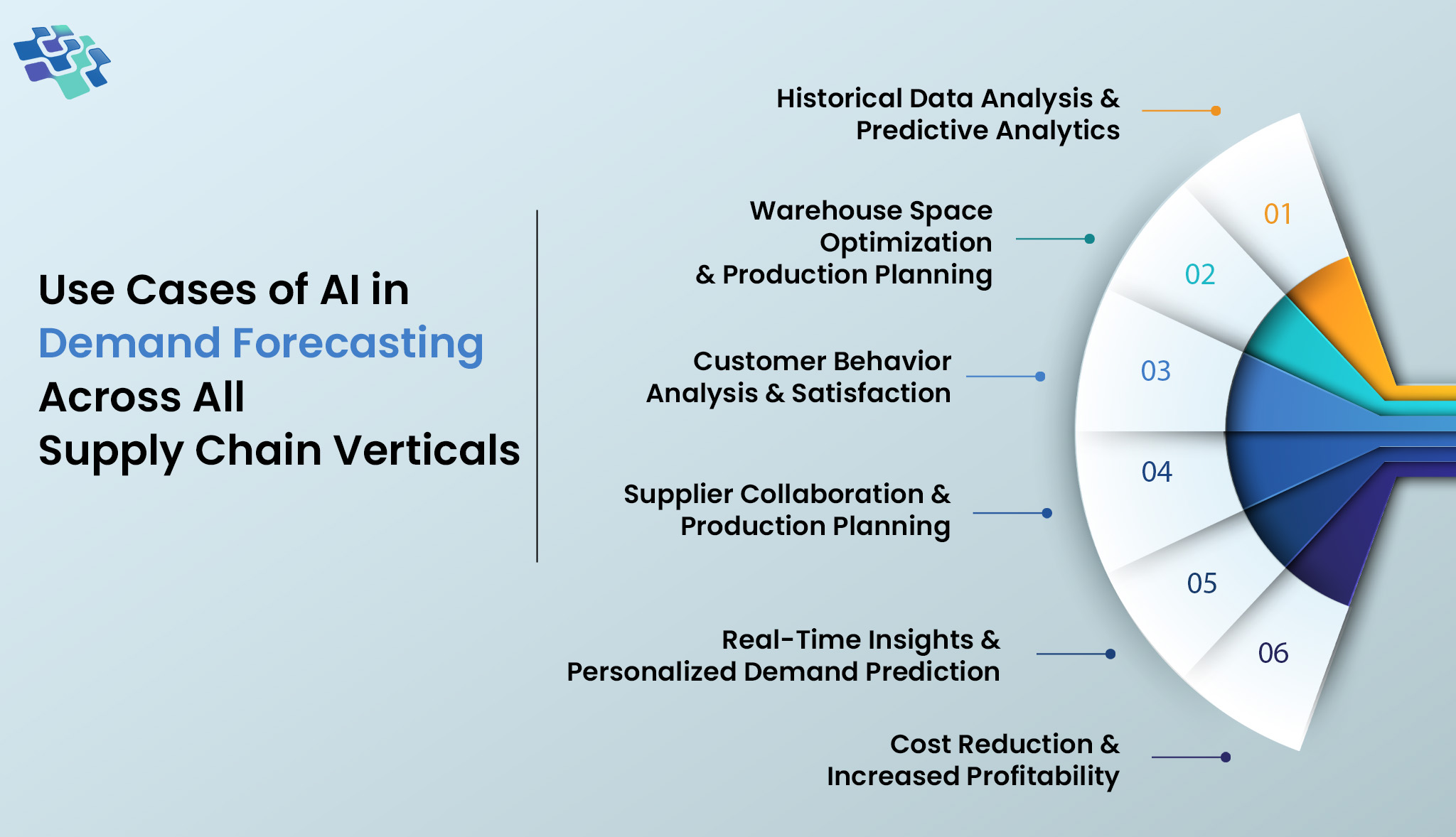
Use Cases of AI in Demand Forecasting Across Supply Chain Verticals
The two primary pillars of supply chain management are planning and execution. The planning portion of SCM begins with demand planning. The important questions of what, when, where, why, and how consumers will desire products and services are addressed to enterprises. Using information from past sales, inventories, and marketing data, AI in demand forecasting develops a plan to satisfy projected demand. The plan informs material requirements planning, product planning, and later supply chain processing stages.
Stay In the Know
Get Latest updates and industry insights every month.
